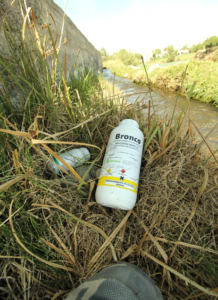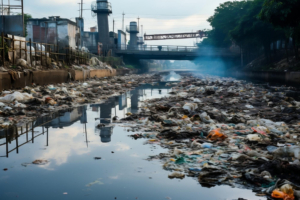Water pollution. Facts you should know.
Water is a natural resource essential for life. However, pollution and overuse is endangering this resource.
Water pollution occurs when contaminants are released into the water. The contaminants can be physical, chemical, and/or biological, resulting in the degradation of the water quality. In extreme cases, it can become a dangerous resource for humans.
In some cases, natural factors such as climate changes or geological conditions can also affect water quality.

Pollution by pesticides in irrigation waters from Arequipa, Peru. Source: TOXICROP project.
Water pollution can be caused by human activity as a result of economic development, industrialization, intense exploitation of water resources, and waste production.
Water pollution comes from:
- Climate change: the increase of terrestrial temperature, caused mainly by CO2 emissions, heats up the water and leads to a decrease in oxygen level. Extreme scenarios of drought or cloudbursts contribute to the increase of pollutants.
- Agriculture: overuse of fertilizers, pesticides, herbicides, etc.
- Livestock activities: manure contains high concentrations of nutrients, organic matter, suspended solids, and pathogens
- Industries utilize water for various purposes (processing, refrigeration, transportation, etc.) which can generate different contaminants
- Oil and fuel spills: the transport and storage of oil and its derivatives often leach to water resources.

Industrial water discharge causing river pollution
Pollutants can generally be classified as follows:
- Physical contaminants: sediments or suspended materials.
- Chemical contaminants: natural (nitrogen, organic matter) or man-made (pesticides, industrial chemicals).
- Biological contaminants: organisms in water, known as pathogens, such as bacteria, viruses, protozoa, and parasites.
Pollutants are rapidly deteriorating our water sources as a result of our daily activities. Therefore, as individuals and society, we must act urgently to protect our water resources.


